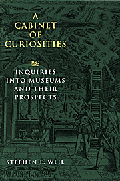STAFF DEVELOPMENT
Creating and sustaining a healthy organization requires a commitment to the ongoing education of management and staff and establishing continuing dialogues across your organization to create respect and high performance.
You achieve healthy retention in your organization by having mission-driven and motivated employees enabled to grow, expand their knowledge and skills, and accomplish a superior job. I help museums create and sustain the culture, policies, and procedures that increase healthy retention.
In helping an institution address such issues, I worked with a series of employee task forces and focus groups. In one group, the staff looked at and experienced the institution from the visitors’ perspective. Out of that relatively simple process grew a completely redesigned reception area and an information desk for which the whole staff rotates assignments every two weeks. For the institution the results were significant and twofold: a highly improved experience for the visitors and a staff now far more committed to the success of the institution because they became a part of the solution.
For concise suggestions on creating a healthy climate, please read the “Master Keys” chapter in Buckingham and Coffman’s First, Break All the Rules and “Gaining Employee Commitment: A Formula for Success” in Stershic’s Taking Care of the People Who Matter Most from my Recommended Reading list.
“Whenever I put Wendy in front of my members, she got great reviews. Her ability to connect with museum professionals and get them to listen is exceptional. She is so amazing in that she can actually pull words out of people’s mouths.“”
 Anita Blackaby
Anita Blackaby
Executive Director of the House of the Seven Gables
Former President of Mid-Atlantic
Association of Museums
Training
Training leverages small-group dynamics to create learning and change. I design and conduct team-taught, highly interactive workshops in:
- Change management
- Conflict resolution
- Effective meetings
- Interviewing skills
- Management and supervisory skills
- Harassment
- Performance feedback
- Teamwork and team building
- Workforce diversity
“Wendy has an incredible grasp on the differences among and between the four generations that make up the museum world. Her ability to explain these differences to a 62-year-old and 22-year-old in the same workshop and in a way they can use the information impressed me.”
 Greg Stevens
Greg Stevens
Assistant Director for
Professional Education
American Association of Museums
Coaching
Fixing Executive Impatience
A female senior executive I coached had been told repeatedly that she didn't communicate effectively with colleagues. She didn't understand why. Working one-on-one, I quickly noticed that she often rolled her eyes whenever someone said something she disagreed with, didn't find relevant, or thought stupid. As a result, her colleagues tended to cut short conversations with her and drop out of discussions. She didn't know she caused this. After she learned to recognize when and why she rolled her eyes, she asked her colleagues to call her on it, and got back to being a good communicator.
Teaching an Old Dog New Tricks
One-on-one coaching is also essential when a serious course correction is needed. I intervened when inappropriate workplace behavior by a COO led to harassment complaints. With this middle-aged man, it was a matter of helping him see that times had changed – what might have been acceptable ten years go no longer was. Once he understood that the impact and perception of things he said were quite different than his intent, and this was getting in the way of getting the job done, the problem disappeared.
Bringing the Wisdom of Others to Bear
For people I coach who learn by reading, I recommend one or two books or articles and then we discuss what they find most relevant or engaging. The key, of course, is to suggest books or articles on point with their concerns and to which they can relate. Recent clients have learned much from Goldsmith's What Got You Here Won't Get You There, Ferrazzi and Raz's Never Eat Alone, and William Bridges' classic, Transitions: Making Sense of Life's Changes. I've discovered that many of my clients find the books we discuss to be so helpful they, in turn, recommend them to others.
How I usually work
Starting with in-person meetings, we:
- Build a trusting, one-on-one relationship.
- Heighten focus and awareness (What... do I do that? Is that how I make people feel? My body language said what?!?)
- Create, reinforce, and expand skills (Stop interrupting! Let people finish their thoughts. Look at them, not your computer screen.)
- Increase value. (Larger roles. Greater influence. Measurable results.)
Counseling
When situations arise that require conflict resolution, I help people:
- understand not only their intent but the impact of their words or actions, regardless of their intent;
- identify the facts, emotions, and stories that explain their own and others’ points of view;
- establish and maintain more productive and respectful relationships
For more guidance on this topic and a helpful template for you to use, please read Difficult Conversations: How to Discuss What Matters Most by Douglas Stone et al.
Mentoring
In the Stephen E. Weil tradition, I educate and encourage people to take charge of their careers by growing and expanding their professional and personal development through mentoring – both by having mentors and being mentors. And, yes, it is possible, even desirable, to be both at the same time.
You can learn much more about my philosophy on mentoring and why I think it is of such value, as well as find more online resources on the subject, by reading
“Mentoring 101,” based on a presentation I made at an AAM annual meeting:
www.aam-us.org/getinvolved/emp/mentoring101.cfm
“Mentoring Matters: A Call for Backup,” an article I co-wrote with Amanda Kodek:
www.aam-us.org/pubs/mn/mentoringmatters.cfm

